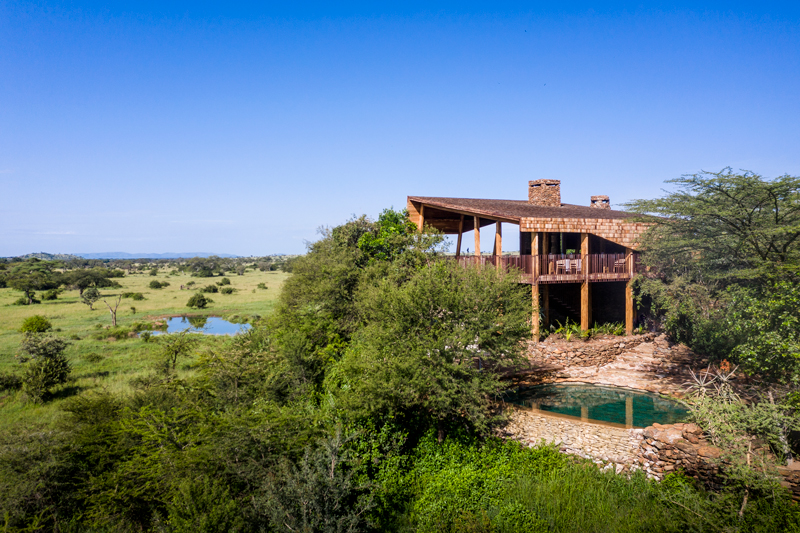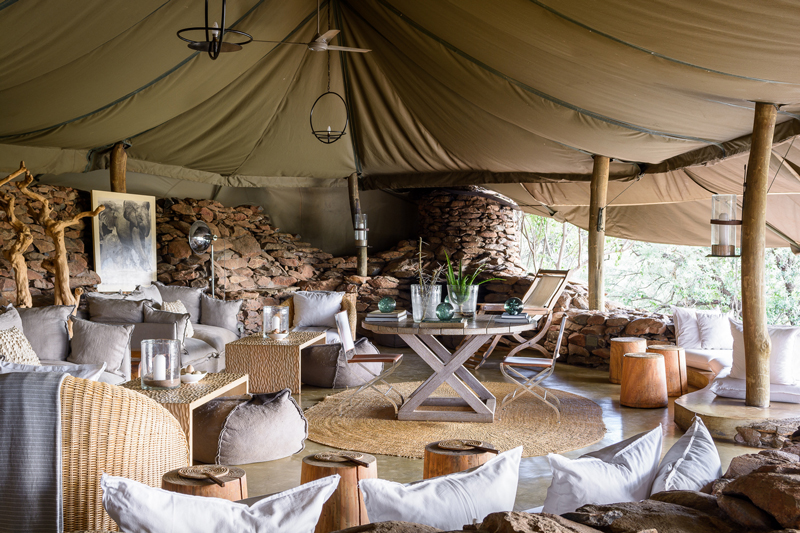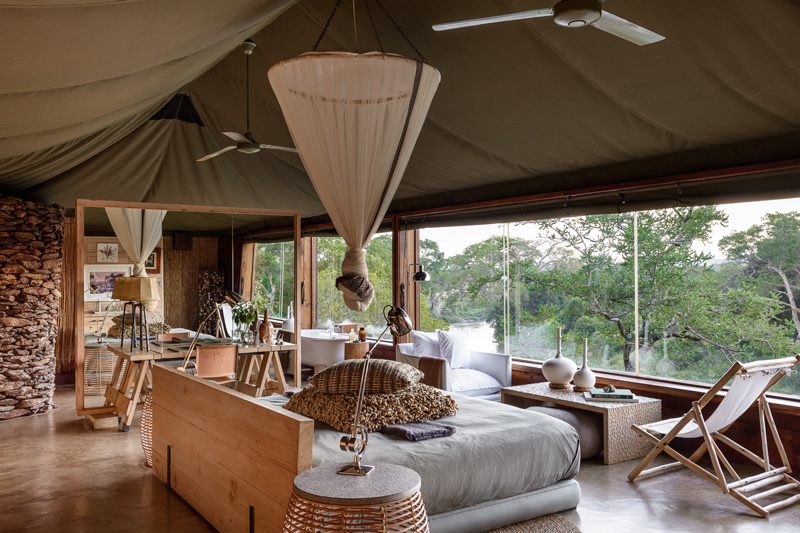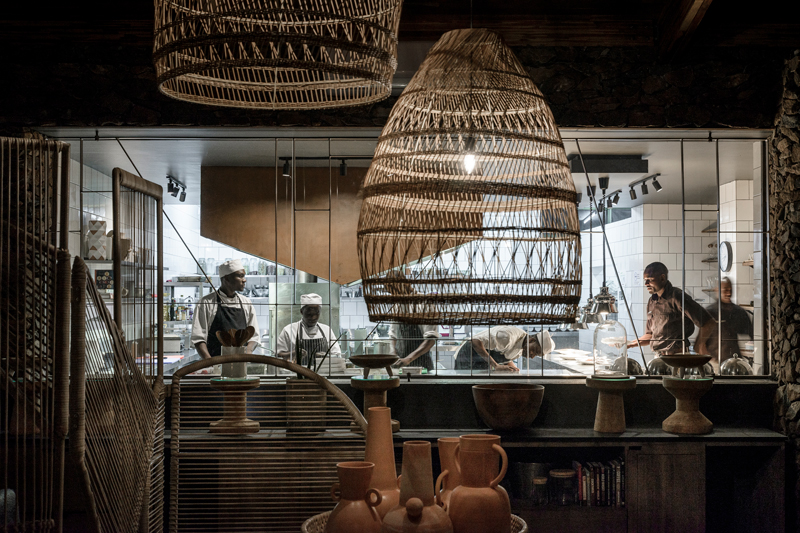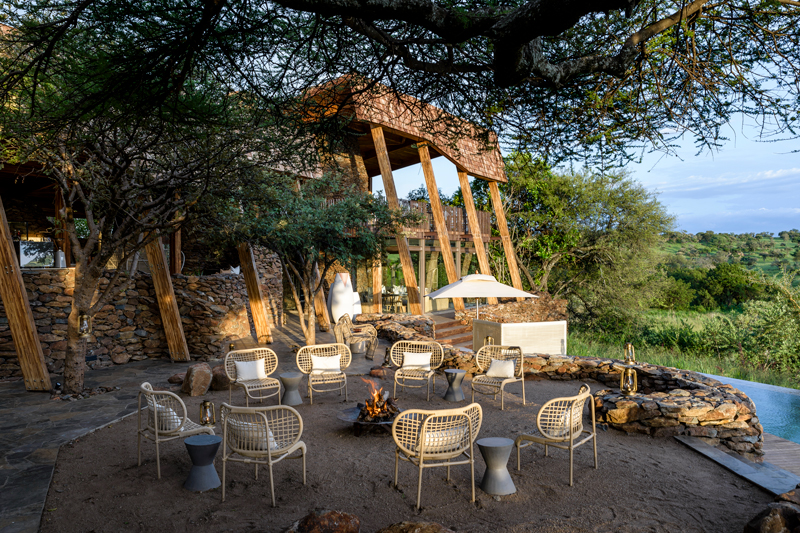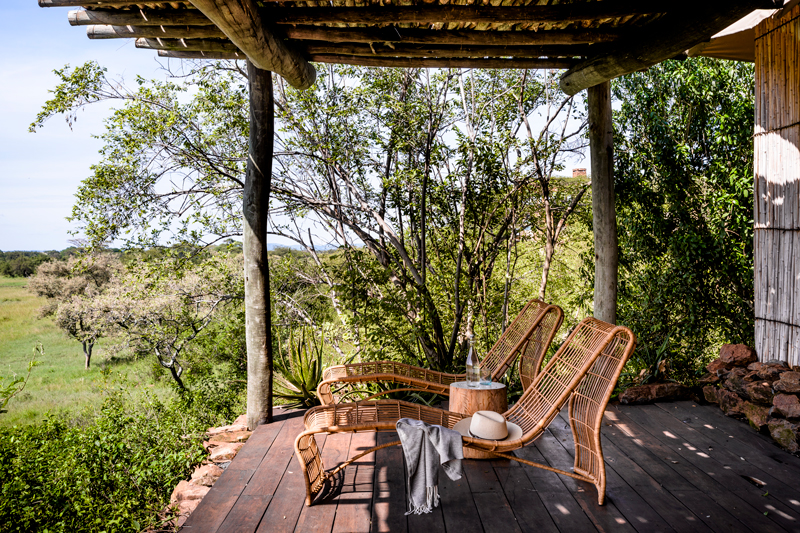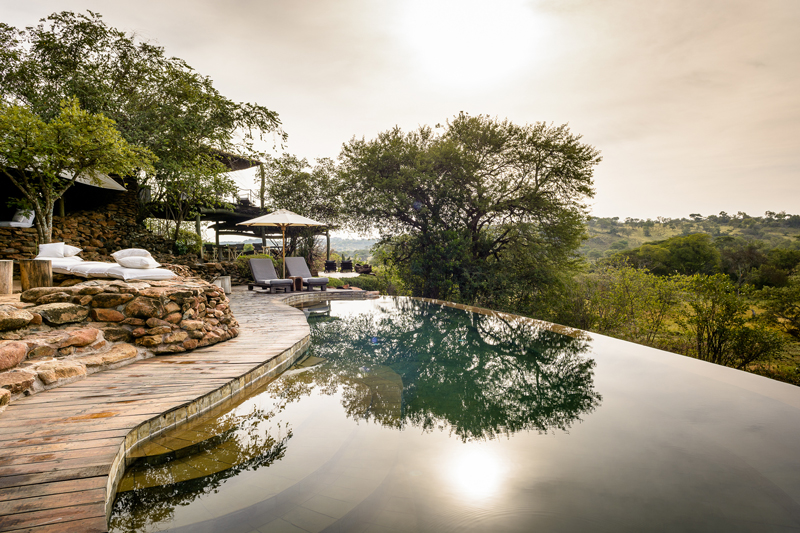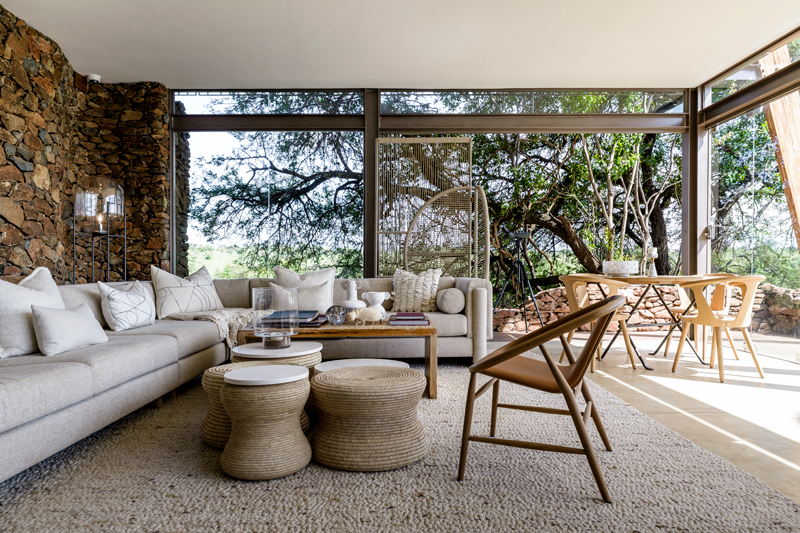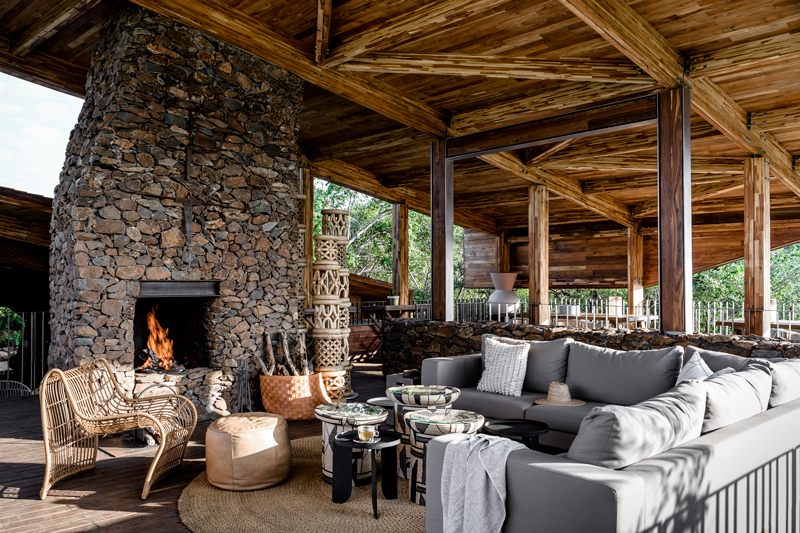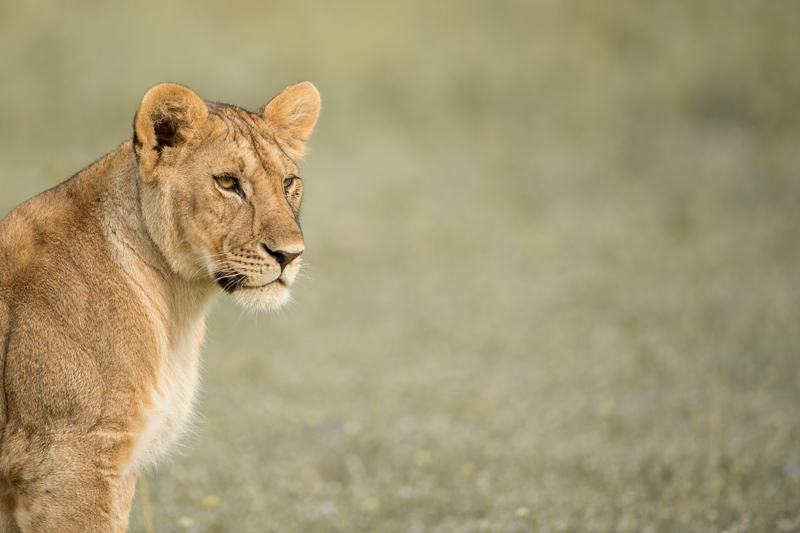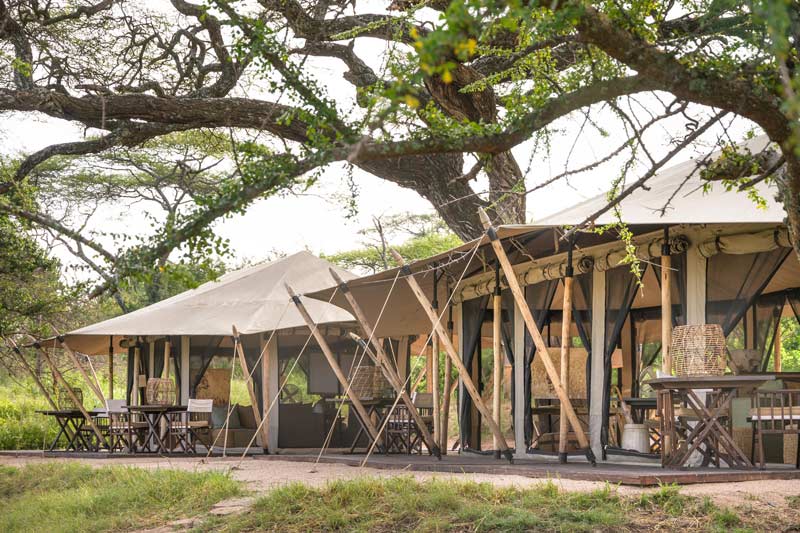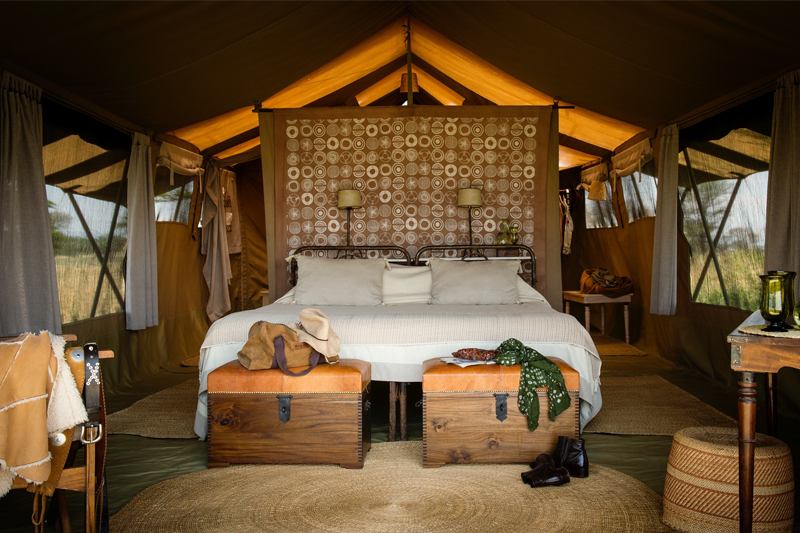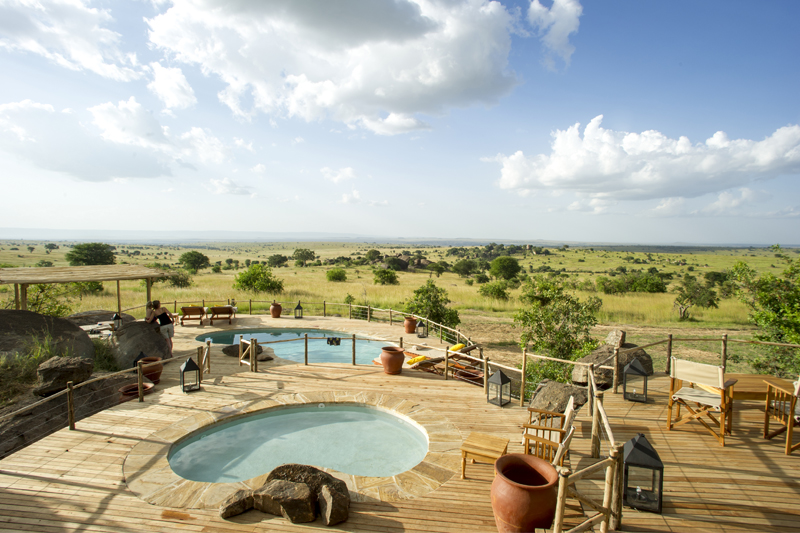Singita Faru Faru Lodge
Singita Faru Faru is located close to the Grumeti River in the eastern section of the private Grumeti Reserves bordering the western corridor of the Serengeti National Park.
Singita are known to be market leaders in providing sophisticated, top end safari lodges and Faru Faru is no exception. Singita Grumeti Reserves is home to five permanent properties (three lodges and two private houses). Whilst all the properties are excellent, we particularly like Faru Faru because it offers the luxury without losing the charm of a bush lodge. Faru Faru offers all the sophistication and service required, combined with exclusivity and a lovely bush ambience. The rooms have views out through the bush where animals can often be seen. Obviously Singita is an expensive brand and that needs to be taken into account, but if you are looking for luxury in the Serengeti, Faru Faru is a natural consideration, especially from late May to July when the migration could be passing through.
Rooms
Faru Faru accommodates up to a total of 22 guests in nine luxurious suites made from reed, stone and glass with canvas roofs, all of which have been styled to blend in with their natural surroundings. Each suite is air conditioned, with en suite bath and shower, and each features a large picture window overlooking the bush beyond and a waterhole. The private deck of each tent is equipped with a Swarovski spotting scope. One of the suites is a two bedroomed Family suite and another is a two bedroomed Villa suite which is suitable for 4 people travelling together (two individual suites which share a central living area, private pool and offers private dining and exclusive safari activities).
Central Areas
The main lodge is home to the boutique and gallery, dining room, bar lounge with satellite television, DVD player and library. There are two swimming pools, a gym and spa treatments are also available.
Facilities
Wi-Fi – Yes
Power for Charging – Yes
Swimming Pool – Yes
Habitat & Wildlife
Singita Grumeti Reserve is located adjacent to the Western Corridor of the Serengeti, bordering the national park, and encompasses 350,000 acres of unrivalled wilderness. With five permanent properties in the reserve, game viewing becomes a very private and exclusive experience. The area forms part of the famous migratory route, which is travelled by hundreds of thousands of animals every year, but there also remains good resident game.
With an area of some 14,000 sq. km, Serengeti is probably the best-known wildlife sanctuary in the world. The ecosystem includes the National Park itself, the Ngorongoro Conservation Area, Maswa Game Reserve and Kenya’s Masai Mara National Reserve, together forming one of the most complex and least disturbed ecosystems on earth. The landscape was originally formed by volcanic activity in the Ngorongoro highlands and it varies from the open short grass plains in the south, to savannah and scattered acacia woodlands in the centre, to extensive woodland and black clay plains in the west, to hilly wooded grassland in the north. Most of the permanent water is found towards the northern and western areas, the lack of permanent water and food in the south being the main reason for the annual migration.
The park is home to approaching 2,000,000 wildebeest, 500,000 Thomson’s gazelle and 250,000 zebra: the largest concentration of plains game in Africa. More than 30 species of herbivores are found here, as well as all the major predators and nearly 500 species of birds.
The central and western sections of the park are fantastic for game viewing all year round, though wild dogs and rhino are not encountered. The central region around Seronera is especially productive for game viewing but does get very busy with tourists. To the south-east of Seronera is a much more exclusive game viewing area that stretches towards the border of the park. To the north-west the ‘Western Corridor’ stretches out along the course of the Grumeti River. This region is busiest in June and early July when the wildebeest and zebra herds pass through on their journey north. The habitat of the region changes dramatically from vast open plains in the east to dense riverine woodland along the Grumeti River in the west.
Activities
The principal activity at Singita Faru Faru is game drives by day in open vehicles across the plains. Night drives are also possible after dark, to seek out nocturnal species. Of the three Singita properties in the reserve, Faru Faru in particular is excellent for walking. Hot air ballooning is available at an extra cost (ballooning must be arranged in advance to be guaranteed). For guests interested in learning more about the work of the Singta Grumeti Fund’s conservation work, there is the opportunity to visit an observation post and meet a game scout (note this involves a steep walk up a dirt path to reach the post). Community project visits can also be arranged at extra cost.
Seasons
Faru Faru is open all year round. The migration season in the western Serengeti runs from late May to early July, however game viewing is good year round.
Children of all ages are accepted, although there is a minimum age of 16 years to join guided walks. Faru Faru has a two bedroomed Family suite which is ideal for two adults and two children, with the rooms linked by a short passage. There is also a Villa suite which can sleep four and would be more suited for families with older children with two suites which share a central living area and private pool and also includes private dining and private safari activities.
The Grumeti Fund is the conservation and community partner of Singita Grumeti. When the Grumeti Fund took over the management of this area in 2003, a combination of uncontrolled illegal hunting, rampant wildfires and spreading stands of invasive alien vegetation had severely depressed resident wildlife numbers. As the custodian of more than 350,000 acres of Serengeti ecosystem, the non-profit Grumeti Fund carries out wildlife conservation and community development programs in and around the Singita Grumeti Reserve. Some examples of their work are given below.
Restoring this critical region to a flourishing wilderness, successes include the recovery of many species including buffalo, wildebeest and elephant populations, and in 2019, the Fund carried out the largest single relocation and reintroduction of nine critically endangered Eastern Black Rhino.
The Grumeti Fund Anti Poaching Unit has over 100 anti poaching scouts working to protect the area from illegal hunting with the help of a canine unit who are trained to track and uncover items such as snares, ammunition, rhino horn and ivory by Working Dogs for Conservation (WD4C). Their handlers also undergo training by WD4C to manage, train and look after the welfare of their dogs. It is hoped that just the presence of the dogs on the plains will deter would be poachers from entering the protected areas.
To better understand local ecological systems and measure the effectiveness of community and conservation work, the Grumeti Fund invests significantly in research and monitoring programs. Established in 2020, RISE (Research & Innovation for Serengeti Ecosystem) aims to develop and support research initiatives that provide tangible and sustainable solutions to benefit the people and wildlife of the Serengeti ecosystem and beyond. They are committed to supporting local talent and early-stage conservationists, and making space for women in the conservation research and protected area management.
The Fund supports an annual all-female three day run across the Serengeti which takes place to raise funds and awareness for female empowerment programmes, helping to encourage a new generation of female conservation leaders.
The Grumeti Fund’s Teaching Support Program (TSP) addresses challenges to local education by placing 52 young, passionate, and recently graduated teachers in 26 local primary schools to boost the teacher-student ratio, improve academic achievement, and increase students’ potential to realise their future ambitions and potential in life.
Singita Serengeti adopted a sustainability framework which serves as a basis for reducing greenhouse gas emissions, saving water, improving waste management and recycling, having a positive impact on local economies and conserving precious natural resources. These sustainability principles are critical to the fulfilment of Singita’s goal of being a completely carbon-neutral operation.




